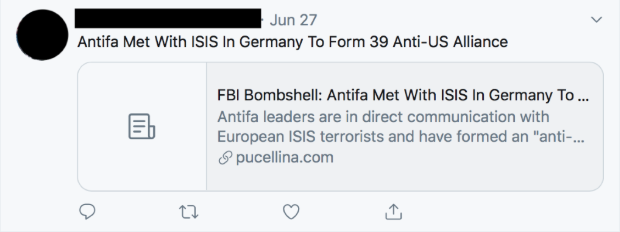Click Bait: Tracking Links and Your Managed Attribution
We’ve all been there—you see an ad in your twitter feed and give it a click, thinking little of it. It feels harmless enough, but your traffic may be closely monitored by a marketer or a web admin through the use of a tracking link. By clicking that link, you’re giving away more information than you think.
Tracking links are helpful to improve your marketing campaign or increase traffic to your website. But they can also have serious implications for your managed attribution—whether you click on them or you create them.
A tracking link is a basic URL that includes additional code that collects information on how users reach a given website. This helps web admins and marketers to identify the platforms and websites that most successfully funnel traffic. They are ubiquitous; if you’ve clicked on an ad online, you have probably opened a tracking link.
So, what does one look like? Take a look at a link from a recent tweet from Merriam-Webster:
Everything from “?” onward are tracking elements, and are not part of the base URL. See for yourself:
Clicking on either of the two links will take you to the same place.
Tracking links bring a series of risks, both for the person clicking on the link and the entity posting it. The risk to the person clicking on a tracking link is that their pathway to the site is now known, including if they used a search engine or the site from which they were referred. They have exposed at least a portion of their behavioral footprint. However, those distributing tracking links also leave a digital trail.
For example, links are searchable on Twitter. Anyone can search for a specific tracking link and sees the accounts who also shared or interacted it. This visibility could allow observers to see accounts involved in spreading the message. In another example, anyone using a single Google Analytics account to manage multiple websites will have the same tracking code embedded into each. It does not take advanced techniques to find this information, just a search bar and the website’s source code.
One study was able to identify a disinformation network of around 200 accounts that used a pool of 10 URL shorteners, a small enough pool for the platform to infer coordination. Many of the accounts have since been taken down, although links from the fake news websites still persist.

The image above is a tweet that includes a link to one of the sites used in the campaign. Note that the link compresses to https://t.co/PyAtjLshnX?amp=1 (with the tracking element visible “…?amp=1”).
Whether you are clicking on tracking links or creating them, you must consider the implications for your managed attribution. Clicking tracking links can give unwanted entities the ability to see the specifics of your internet traffic. Those creating tracking links should also be aware that tracking links leave a unique technical fingerprint that can be easy to trace.









